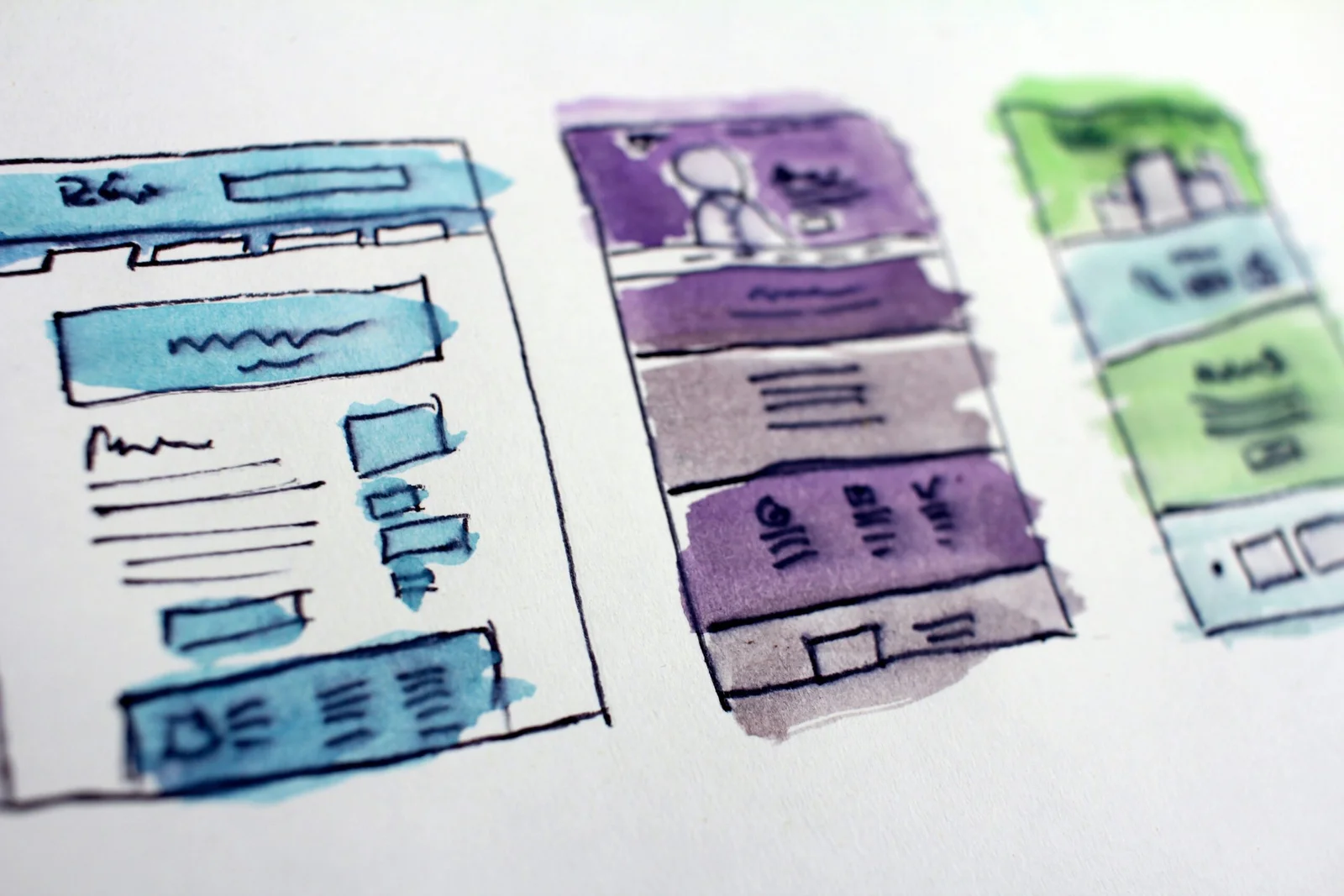Introduction: The Importance of First Impressions
In today’s digital age, a website is more than just a virtual storefront; it is the digital face of a business, often forming the first impression on potential customers. This initial interaction can be pivotal. Studies show that users form an opinion about a website in just 50 milliseconds, emphasizing the need for a stunning and well-designed website. The design, usability, and aesthetics of a website are not mere embellishments but essential elements that capture visitor attention and foster trust.
A well-crafted website that is visually appealing and easy to navigate can significantly enhance user experience. This positive first impression can lead to higher user retention rates and increased conversion rates. According to research, 38% of people will stop engaging with a website if the content or layout is unattractive. Furthermore, websites that are perceived as visually unappealing or difficult to navigate are often abandoned quickly, leading to high bounce rates.
The impact of a strong first impression extends beyond mere aesthetics. Usability plays a crucial role as well. A website that is intuitive and user-friendly encourages visitors to explore further, increasing the likelihood of conversions. For instance, a study by Forrester Research found that a well-designed user interface could increase a website’s conversion rate by up to 200%, while a better user experience design could yield conversion rates up to 400%. These statistics underscore the importance of investing in a stunning website that not only looks good but also provides a seamless experience for users.
In conclusion, the importance of first impressions cannot be overstated. A stunning website that combines design, usability, and aesthetics effectively can capture attention, build trust, and significantly impact user retention and conversion rates. As the digital face of your business, your website must be crafted to make a lasting and positive first impression.
Design Elements That Captivate
Design elements are pivotal in crafting a visually appealing and engaging website. The color scheme, typography, imagery, and layout are the fundamental components that collectively create an impactful user experience. A well-chosen color palette can evoke specific emotions and establish a connection with the audience. For instance, the use of warm tones can invoke feelings of warmth and comfort, whereas cool tones might convey professionalism and calmness. Websites like Apple’s and Spotify’s effectively utilize their color schemes to resonate with their brand identity and audience expectations.
Typography is another crucial element that influences readability and overall aesthetic. The choice of fonts, their size, and spacing contribute to how information is perceived. A combination of serif and sans-serif fonts, for example, can create a dynamic visual contrast, enhancing the overall readability. Websites such as Medium and The New York Times demonstrate the power of typography by making their content easily digestible and visually appealing.
Imagery, including photos, illustrations, and graphics, plays a significant role in engaging users. High-quality visuals can capture attention, convey messages more effectively than text alone, and enhance the storytelling aspect of a website. For example, Airbnb and National Geographic use striking imagery to draw visitors in and keep them engaged. The strategic placement of images, coupled with relevant content, can significantly boost user interaction and retention.
The layout, or the structural design of a website, determines how information is organized and presented. A well-structured layout ensures that users can navigate the site intuitively, finding the information they need with ease. Websites like Dropbox and Slack are exemplary in their use of a clean, straightforward layout that guides users seamlessly through their offerings.
Consistency across these design elements is paramount for fostering a cohesive brand identity. It ensures that every page of the website aligns with the overarching brand message and visual style, creating a unified experience. Consistent use of colors, fonts, and imagery not only enhances the aesthetic appeal but also reinforces brand recognition and trust. By integrating these design elements thoughtfully, businesses can create stunning websites that captivate and engage their audience.
User Experience (UX): Beyond Aesthetics
User experience (UX) encompasses much more than just the visual appeal of a website. While a stunning design can capture initial interest, it is the seamless integration of functionality and usability that keeps users engaged. A critical aspect of UX is intuitive navigation. When users can easily find what they are looking for, their overall satisfaction increases, reducing bounce rates and encouraging return visits. Simple, clear, and logically structured menus are essential for guiding users through the site effortlessly.
Equally important is the website’s loading speed. In today’s fast-paced digital world, users expect instant access to information. Pages that load quickly not only improve user satisfaction but also positively impact search engine rankings. Implementing strategies such as image optimization, leveraging browser caching, and minimizing HTTP requests can significantly enhance loading times, thereby improving the overall user experience.
Mobile responsiveness is another vital component of UX design. With a growing number of users accessing websites from mobile devices, ensuring that your site is fully functional on various screen sizes is imperative. Responsive design techniques, such as fluid grids and flexible images, ensure that content adjusts seamlessly to different devices, providing a consistent user experience across all platforms.
Accessibility is a crucial, yet often overlooked, element of UX. A truly inclusive website considers users with diverse needs, including those with disabilities. Implementing accessibility features such as keyboard navigation, screen reader compatibility, and alt text for images ensures that all users, regardless of their abilities, can interact with the website effectively. Adhering to the Web Content Accessibility Guidelines (WCAG) can help in creating an accessible and user-friendly site.
Ultimately, the goal of UX design is to create a website that is not only visually appealing but also functional, responsive, and accessible. By focusing on intuitive navigation, fast loading times, mobile responsiveness, and accessibility, businesses can significantly enhance user satisfaction and engagement, leading to higher conversion rates and long-term success.
SEO and Performance: The Backbone of Visibility
In the digital age, the design of a website is intricately linked with its search engine optimization (SEO) performance. A well-designed website not only captivates visitors but also enhances search engine rankings through various technical and aesthetic elements. One of the primary factors in this relationship is site speed. Fast-loading websites are favored by search engines, as they contribute to a positive user experience. When pages load quickly, visitors are more likely to stay longer, reducing bounce rates and signaling to search engines that the site is valuable and relevant.
Mobile-friendliness is another crucial aspect of modern web design that impacts SEO. With the majority of internet users accessing websites via mobile devices, search engines, particularly Google, prioritize mobile-optimized sites in their rankings. A responsive design that adapts seamlessly to different screen sizes ensures that users have a consistent and pleasant experience, regardless of the device they use.
Proper use of meta tags also plays a significant role in effective SEO. Meta tags, including title tags and meta descriptions, provide search engines with information about the content of a webpage. When these tags are accurately crafted and include relevant keywords, they help search engines understand the context of the page, improving its chances of appearing in relevant search results.
Performance optimization extends beyond just speed and mobile-friendliness. It encompasses various technical aspects such as clean coding, image optimization, and effective use of content delivery networks (CDNs). These elements collectively contribute to a website’s overall performance, making it more attractive to search engines and users alike.
In essence, a well-designed website that prioritizes performance optimization is more likely to achieve better visibility. By focusing on site speed, mobile compatibility, and proper use of meta tags, businesses can enhance their search engine rankings, resulting in higher traffic and greater engagement with their target audience.
Content is King: Engaging and Informative
In the realm of digital presence, the adage “content is king” holds significant weight. While a visually stunning website can capture initial attention, it is the quality of content that determines whether visitors stay and engage. Engaging, informative, and relevant content is essential in retaining visitors and encouraging them to take desired actions, such as making a purchase, signing up for a newsletter, or sharing information on social media.
The role of high-quality content cannot be overstated. It serves as the backbone of user experience, providing value that extends beyond aesthetics. Content that resonates with the audience builds trust and authority, making it more likely for visitors to return. To maximize the impact of content, it is critical to implement a robust content strategy.
One key aspect of a successful content strategy is regular updates. Fresh, updated content signals to both visitors and search engines that the website is active and relevant. This can be achieved through blog posts, news updates, or regularly refreshed product descriptions. Frequent updates can improve search engine rankings and drive more organic traffic to the site.
Incorporating multimedia elements such as images, videos, and infographics can significantly enhance content engagement. Visual aids can break up text, making it more digestible and appealing. Videos, in particular, can convey complex information succinctly and can be a powerful tool for storytelling. Infographics provide a visually engaging way to present data and statistics, making it easier for the audience to grasp key points.
Storytelling techniques can also elevate content quality. By weaving narratives that connect with the audience’s emotions or experiences, content becomes more relatable and memorable. Stories can illustrate the benefits of products or services in a way that purely factual descriptions cannot. They provide context and create a compelling reason for visitors to engage with the content and, ultimately, the website.
In essence, the symbiotic relationship between stunning design and high-quality content is what makes a website truly powerful. By focusing on creating engaging, informative, and regularly updated content, website owners can ensure that their digital presence not only attracts but also retains visitors, driving them to take meaningful actions.
Building Trust Through Professionalism
Creating a professional-looking website is essential for building trust and credibility with visitors. The first impression a website makes can significantly impact a visitor’s perception of the brand. A clean design, clear calls-to-action (CTAs), testimonials, and secure payment gateways are critical elements that contribute to a professional appearance and foster trust.
A clean design is fundamental in establishing a professional website. This means a well-organized layout with a balanced use of colors, fonts, and imagery. A clutter-free website with intuitive navigation helps users find the information they need quickly and effortlessly. For instance, Apple’s website is renowned for its minimalist design, which emphasizes simplicity and ease of use, thereby enhancing user experience and trust.
Clear calls-to-action are another crucial element. CTAs guide visitors towards the desired actions, whether it’s making a purchase, signing up for a newsletter, or contacting customer support. These buttons should be prominently displayed and easily accessible. Websites like Amazon excel in using CTAs effectively, ensuring that users know exactly what steps to take next, thus facilitating smoother transactions.
Incorporating testimonials and reviews from satisfied customers can significantly boost a website’s credibility. Potential customers are more likely to trust a brand that has positive feedback from real users. For example, platforms like TripAdvisor leverage user reviews to build trust and influence booking decisions. Displaying authentic testimonials can reassure visitors about the quality of products or services offered.
Lastly, ensuring secure payment gateways is paramount, especially for e-commerce websites. Security seals, SSL certificates, and clear privacy policies can alleviate concerns about data security. Websites like PayPal and Shopify prioritize secure transactions, which fosters confidence among users when making online payments.
In essence, a professional-looking website that integrates clean design, clear CTAs, genuine testimonials, and secure payment options can effectively build trust and convert visitors into loyal customers.
Case Studies: Success Stories of Stunning Websites
In today’s digital era, having a stunning website can significantly impact a business’s success. Several organizations have experienced remarkable benefits from investing in high-quality website designs. These case studies highlight the challenges they faced, the design solutions implemented, and the positive outcomes achieved, demonstrating the tangible benefits of a well-crafted online presence.
One notable example is the e-commerce site, “Boutique Bliss.” Initially, Boutique Bliss struggled with a high bounce rate and low conversion rates. The website was cluttered, and the user experience was subpar. By collaborating with a professional design team, they transformed their site into a visually appealing and user-friendly platform. The redesign included a clean, modern layout, high-quality images, and intuitive navigation. As a result, Boutique Bliss saw a 40% increase in time spent on the site and a 25% boost in sales within six months.
Similarly, “Eco Solutions,” a green technology firm, faced challenges with its outdated website that failed to convey its innovative approach and commitment to sustainability. The company invested in a complete redesign, focusing on a sleek, eco-friendly aesthetic and interactive elements that showcased their products’ benefits. This stunning website not only improved customer engagement but also led to a 50% increase in inquiries and a 35% rise in partnership opportunities, showcasing the power of a stunning website in driving business growth.
Another success story is “Urban Cuisine,” a restaurant chain that struggled with online reservations and customer engagement. Their previous website lacked mobile responsiveness and had a confusing layout. The revamped site featured a responsive design, vibrant imagery, and an easy-to-navigate interface. This transformation resulted in a 60% increase in online reservations and a significant boost in customer satisfaction, highlighting the importance of user experience in the hospitality industry.
These case studies underscore the profound impact of investing in a stunning website. From increased sales and customer engagement to enhanced brand perception and business growth, the benefits are clear. A well-designed website is not just a digital presence; it’s a powerful tool for success in the modern marketplace.
Conclusion: Investing in Your Digital Presence
In today’s digital age, having a stunning website is not just an option but a necessity for businesses aiming to make a lasting impression online. Throughout this blog, we have explored the multifaceted benefits of an exceptional website, from enhancing user experience to boosting search engine rankings. A well-designed website not only attracts visitors but also converts them into loyal customers, thereby driving business growth.
As we have discussed, a visually appealing and user-friendly website can significantly impact your brand’s credibility and trustworthiness. Investing in professional design and development ensures that your website is not only aesthetically pleasing but also functional, responsive, and optimized for various devices. This holistic approach to web design can set you apart from competitors and establish a strong digital presence.
Now is the time to evaluate your current website. Does it effectively represent your brand? Is it easy to navigate? Are visitors finding the information they need quickly? If the answer to any of these questions is no, it may be time to consider a website overhaul. Start by conducting a thorough audit of your site’s design, content, and performance. Identify areas that need improvement and set clear objectives for your new website.
For those looking to enhance their digital presence, here are some actionable steps:
- Consult with professional web designers and developers to get expert insights and recommendations.
- Focus on creating high-quality, engaging content that speaks to your audience.
- Ensure your website is mobile-friendly and optimized for search engines.
- Regularly update your website to keep it fresh and relevant.
We invite you to share your thoughts on the importance of a stunning website and how it has impacted your business. If you have any questions or need further information, please do not hesitate to contact us. Investing in your digital presence is a strategic move that can yield substantial returns, and we are here to help you every step of the way.



